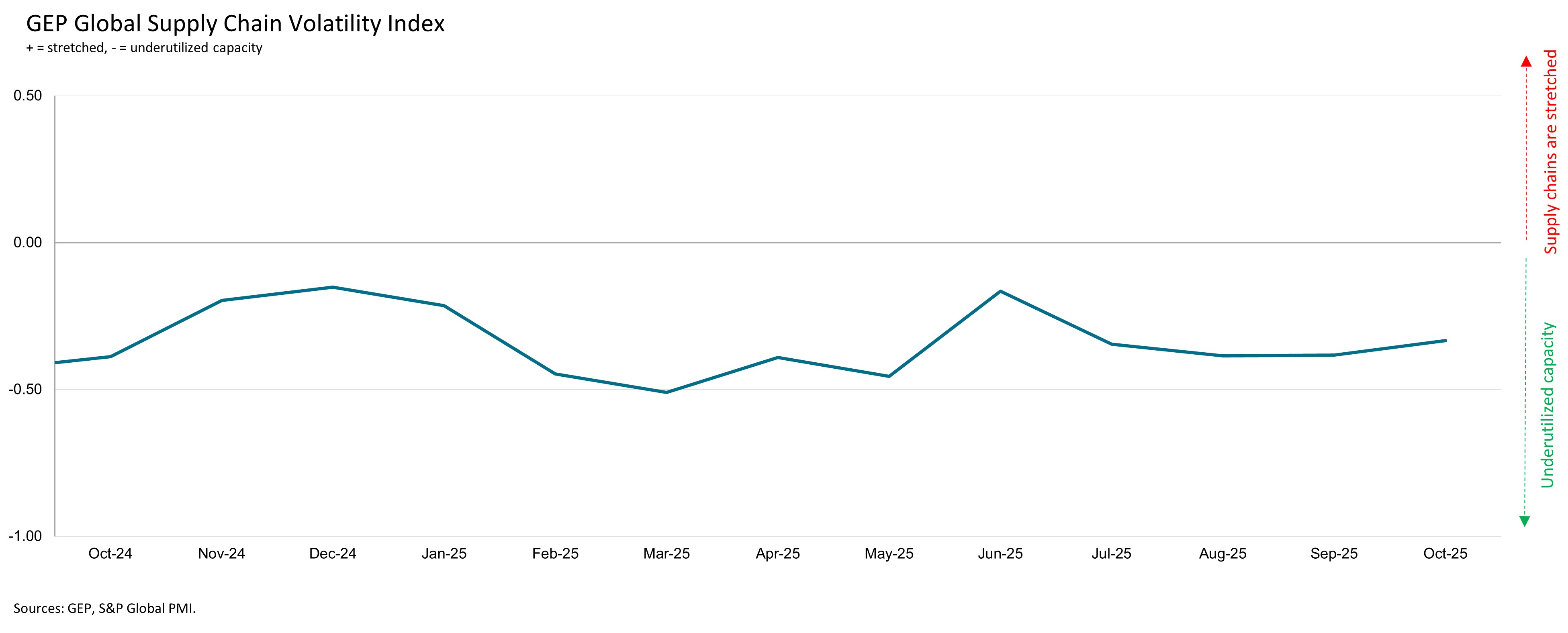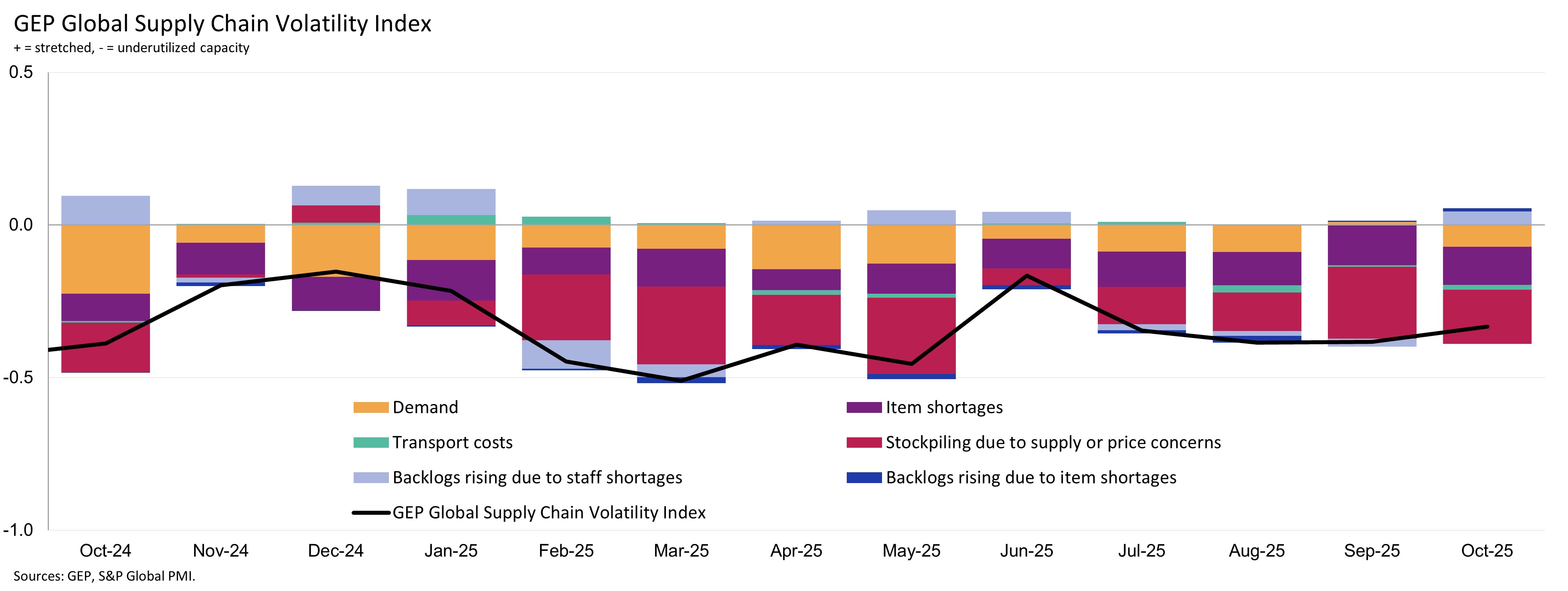-
GEP Software
-
- Procurement Software
- Direct Procurement Software
- Indirect Procurement Software
- Unified Source-to-Pay
- Source-To-Contract Software
- Procure-to-Pay
- Midsize & High Growth Enterprises
- Key Capabilities
- Spend Analysis
- Sourcing
- Contract Lifecycle Management
- Supplier Lifecycle Management
- Third-Party Risk Management
- Purchasing
- Payments
- Data Analytics and Reporting
- Do more with GEP SMART
- Intake Management & Orchestration
- Intelligent Category Management
- Tail Spend Management
- Cost Data & Analytics (GEP COSTDRIVERS)
- AI-First Supply Chain Management
- Supply Chain Visibility and Execution
- Logistics Visibility
- Inventory and Warehouse Management
- GEP Multienterprise Collaboration Network
- Supply Chain Control Tower
- Field Services
- Supply Chain Collaboration & Planning
- Supply Chain Planning
- Purchase Order Collaboration
- Forecast Collaboration
- Capacity Collaboration
- Quality Management Software
- Should-Cost Modeling
- Direct Material Sourcing
-
-
GEP Strategy
-
GEP Strategy
Unrivaled supply chain and procurement expertise + the transformative power of AI
Supply Chain Consulting
- Environmental, Social and Governance
- Sustainability Consulting Services
- Socially Responsible Sourcing
- Scope 3
- Demand and Supply Chain Planning
- Collaborative Planning
- Source To Contract
- Procure To Pay
- Inventory Strategy & Management
- Operations & Manufacturing Excellence
- GEP Total Inventory Management Solution
- Network Strategy & Optimization
- Warehousing & Transportation Management
-
-
GEP Managed Services
-
GEP Managed Services
World-class skills, experience and know-how — amplified by the power of AI
-
- Ample global spare capacity lowers risk of goods price inflation beyond tariffs as manufacturers trim inventories and purchasing
- North American manufacturers report steepest drop in material purchases since May, signaling weaker production ahead
- Chinese factories pull back buying, increasing spare capacity across Asia’s suppliers
- Europe’s manufacturing sector recovery continues to make slow progress
Clark, N.J., Nov. 12, 2025 — Manufacturers in North America reduced their purchases of raw materials and intermediate goods in October, according to the GEP Global Supply Chain Volatility Index, which is based on a monthly survey of 27,000 businesses worldwide. The fall in input demand, a key early indicator of factory output, was the steepest since May and suggests that production in the region is set to cool in the coming months.
The Volatility Index, which tracks demand conditions, shortages, transportation costs, inventories, and backlogs, registered -0.33 in October, indicating that global supply chain capacity remains underused. Manufacturers across major economies continued to keep inventories lean and curb new purchases of inputs.
In North America, the slowdown followed several months of tariff-driven stockpiling earlier in the year. Firms reported both lower material purchasing and a reduction in deliberate inventory building, taking pressure off supply chains, which are now running well below full capacity.
Asia’s momentum also faded. A pullback in factory buying across China offset continued strength in India, leading to a broader softening across the region.
In Europe, manufacturers showed only a marginal increase in activity. Capacity at suppliers remains underutilized, and firms in Germany, France, Italy, and the U.K. continued to restrict raw material purchasing, underscoring a sluggish industrial recovery.
“North America is seeing the clearest sign yet of a manufacturing pullback,” said Michael DuVall, vice president, consulting, GEP. “Manufacturers are buying less and working down inventories, which points to weaker production through the winter. With spare capacity across global supply, we do not anticipate any price pressure, beyond tariffs, on buyers.”

Interpreting the data:
- Index > 0, supply chain capacity is being stretched. The further above 0, the more stretched supply chains are.
- Index < 0, supply chain capacity is being underutilized. The further below 0, the more underutilized supply chains are.

Interpreting the data:
- Index > 0, supply chain capacity is being stretched. The further above 0, the more stretched supply chains are.
- Index < 0, supply chain capacity is being underutilized. The further below 0, the more underutilized supply chains are.
OCTOBER 2025 REGIONAL KEY FINDINGS
ASIA: Index dropped to -0.30, from -0.06, indicating greater spare capacity across supply chains into and across Asia. This was mostly driven by a slowdown in Chinese manufacturers’ purchasing.
NORTH AMERICA: Index fell to its lowest level since March (-0.45 in October, vs. -0.25 previously), signaling capacity at the region’s suppliers went underutilized to the greatest extent since prior to April’s sweeping tariff announcements.
EUROPE: Index rises to three-month high of -0.25, from -0.53, indicating unused manufacturing capacity as the region’s recovery from its protracted industrial downturn remains sluggish.
U.K.: Sharp drop in index to -0.80, from -0.57, highlighting sharp reduction in activity at the U.K.’s suppliers.
OCTOBER 2025 KEY FINDINGS

DEMAND: September’s boost in factory purchasing, the strongest since June 2022, was reversed in October as manufacturers in key economies such as China and the U.S. reported slowdowns in procurement. Factories’ orders of commodities, components and intermediate goods remain subdued, indicating a soft near-term outlook for producers.
INVENTORIES: Reports from global procurement managers of an increase in stockpiling due to price or supply fears remain historically low, indicating limited concern about purchasing price inflation or shortages. The data continue to demonstrate a preference among manufacturers for lean warehouses.
MATERIAL SHORTAGES: The global item shortages tracker remains well below its long-term trend level, signaling healthy supply levels for the world’s manufacturers. Factories will have little, if any, challenges in sourcing vendors for commodities, components and other intermediate products.
LABOR SHORTAGES: There was a modest rise in labor-related capacity constraints during October, with reports of backlogs rising due to inadequate staff supply ticking up to a four-month high. Nevertheless, the labor shortages tracker was only marginally above its long-term trend.
TRANSPORTATION: Global transportation costs ticked down slightly in October to just below historically average levels.
For more information, visit www.gep.com/volatility
Note: Full historical data dating back to January 2005 is available for subscription. Please contact economics@spglobal.com.
The next release of the GEP Global Supply Chain Volatility Index will be 8 a.m. ET, Dec. 10, 2025.
About the GEP Global Supply Chain Volatility Index
The GEP Global Supply Chain Volatility Index is produced by S&P Global and GEP. It is derived from S&P Global’s PMI® surveys, sent to companies in over 40 countries, totaling around 27,000 companies. The headline figure is a weighted sum of six sub-indices derived from PMI data, PMI Comments Trackers and PMI Commodity Price & Supply Indicators compiled by S&P Global.
- A value above 0 indicates that supply chain capacity is being stretched and supply chain volatility is increasing. The further above 0, the greater the extent to which capacity is being stretched.
- A value below 0 indicates that supply chain capacity is being underutilized, reducing supply chain volatility. The further below 0, the greater the extent to which capacity is being underutilized.
A Supply Chain Volatility Index is also published at a regional level for Europe, Asia, North America and the U.K. For more information about the methodology, click here.
About GEP
GEP® delivers AI-powered procurement and supply chain solutions that help global enterprises become more agile and resilient, operate more efficiently and effectively, gain competitive advantage, boost profitability and increase shareholder value. Fresh thinking, innovative products, unrivaled domain expertise, smart, passionate people — this is how GEP SOFTWARE™, GEP STRATEGY™ and GEP MANAGED SERVICES™ together deliver procurement and supply chain solutions of unprecedented scale, power and effectiveness. Our customers are the world’s best companies, including more than 1,000 Fortune 500 and Global 2000 industry leaders who rely on GEP to meet ambitious strategic, financial and operational goals. A leader in multiple Gartner Magic Quadrants, GEP’s cloud-native software and digital business platforms consistently win awards and recognition from industry analysts, research firms and media outlets, including Gartner, Forrester, IDC, ISG, and Spend Matters. GEP is also regularly ranked a top procurement and supply chain consulting and strategy firm, and a leading managed services provider by ALM, Everest Group, NelsonHall, IDC, ISG and HFS, among others. Headquartered in Clark, New Jersey, GEP has offices and operations centers across Europe, Asia, Africa and the Americas. To learn more, visit www.gep.com.
About S&P Global
S&P Global (NYSE: SPGI) S&P Global provides essential intelligence. We enable governments, businesses and individuals with the right data, expertise and connected technology so that they can make decisions with conviction. From helping our customers assess new investments to guiding them through ESG and energy transition across supply chains, we unlock new opportunities, solve challenges and accelerate progress for the world. We are widely sought after by many of the world’s leading organizations to provide credit ratings, benchmarks, analytics and workflow solutions in the global capital, commodity and automotive markets. With every one of our offerings, we help the world’s leading organizations plan for tomorrow, today.
Media Contacts
| Derek Creevey Director, Public Relations GEP Phone: +1 732-382-6565 Email: derek.creevey@gep.com | Joe Hayes Principal Economist S&P Global Market Intelligence Phone: +44-1344-328-099 Email: joe.hayes@spglobal.com | S&P Global Market Intelligence Email: Press.mi@spglobal.com |
Disclaimer
The intellectual property rights to the data provided herein are owned by or licensed to S&P Global and/or its affiliates. Any unauthorised use, including but not limited to copying, distributing, transmitting or otherwise of any data appearing is not permitted without S&P Global’s prior consent. S&P Global shall not have any liability, duty or obligation for or relating to the content or information (“Data”) contained herein, any errors, inaccuracies, omissions or delays in the Data, or for any actions taken in reliance thereon. In no event shall S&P Global be liable for any special, incidental, or consequential damages, arising out of the use of the Data. Purchasing Managers’ Index™ and PMI® are either trade marks or registered trade marks of S&P Global Inc or licensed to S&P Global Inc and/or its affiliates.
This Content was published by S&P Global Market Intelligence and not by S&P Global Ratings, which is a separately managed division of S&P Global. Reproduction of any information, data or material, including ratings (“Content”) in any form is prohibited except with the prior written permission of the relevant party. Such party, its affiliates and suppliers (“Content Providers”) do not guarantee the accuracy, adequacy, completeness, timeliness or availability of any Content and are not responsible for any errors or omissions (negligent or otherwise), regardless of the cause, or for the results obtained from the use of such Content. In no event shall Content Providers be liable for any damages, costs, expenses, legal fees, or losses (including lost income or lost profit and opportunity costs) in connection with any use of the Content.
Media contact

Breadcrumb
- HOME
- NEWS AND UPDATES
- NORTH AMERICAN MANUFACTURERS CUT ORDERS AS GLOBAL SUPPLY CHAINS REMAIN UNDERUTILIZED IN OCTOBER: GEP GLOBAL SUPPLY CHAIN VOLATILITY INDEX









